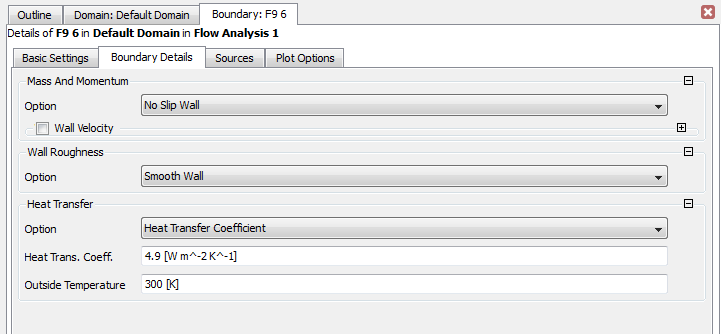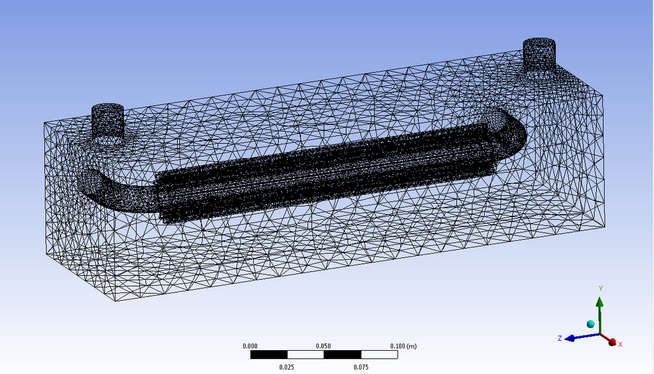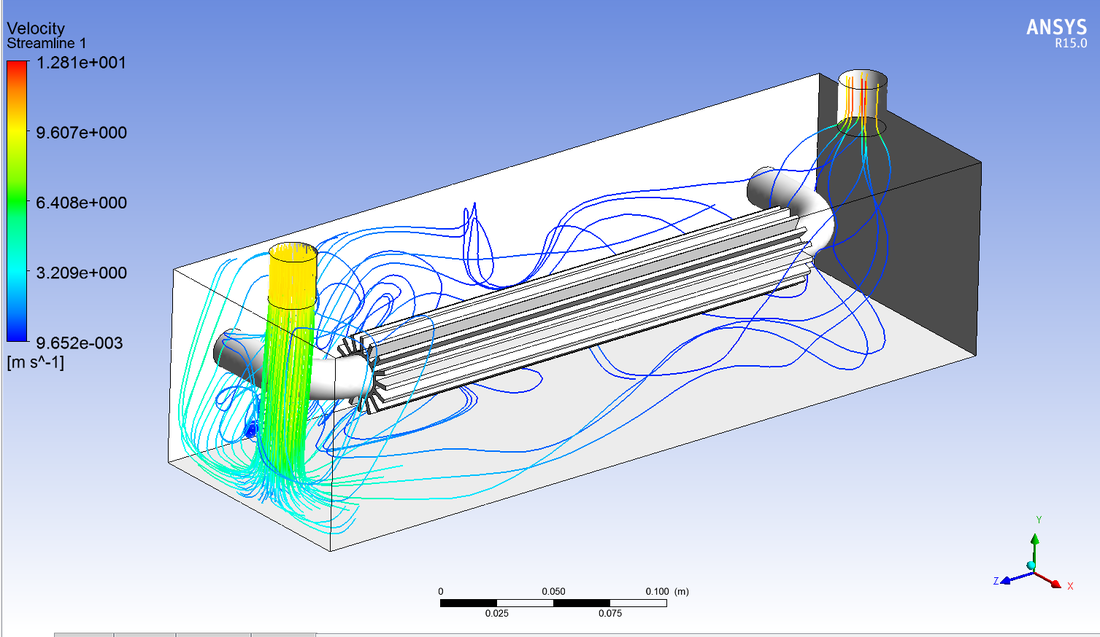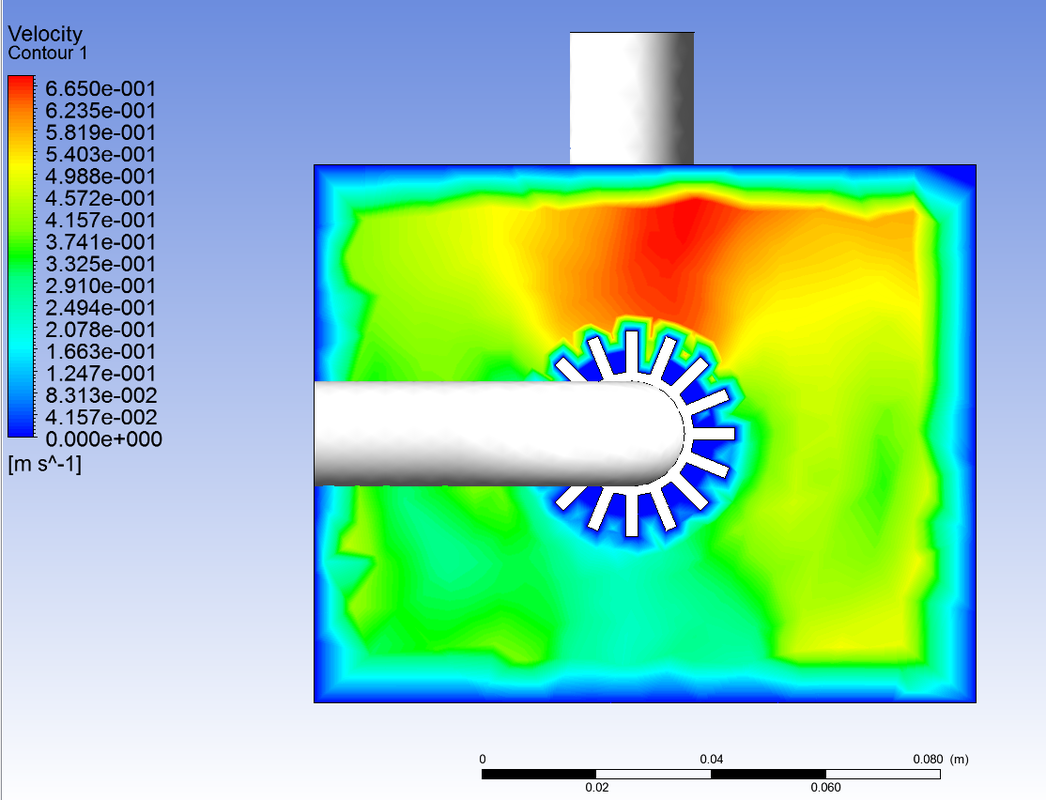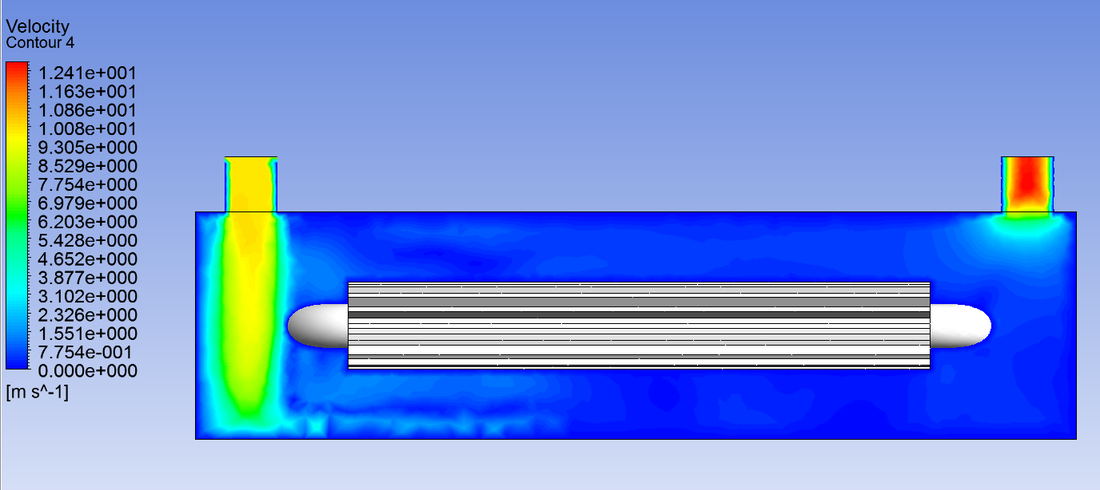ANSYS-CFX Finned Heat Exchanger
The latest new section on my website is the finned heat exchanger one one.
Important notes
1- All tutorial geometries are available: You can contact me by email: almakky@hotmail.co.uk and the mesh will be sent to your email account.
2- I would very much appreciate any feedback about the tutorials, and your contribution will be stated in the tutorial, I plan to update the tutorials.
1- All tutorial geometries are available: You can contact me by email: almakky@hotmail.co.uk and the mesh will be sent to your email account.
2- I would very much appreciate any feedback about the tutorials, and your contribution will be stated in the tutorial, I plan to update the tutorials.
Simulation Setup
Remember to use the Thermal Energy model: An Energy Transport Equation is solved which neglects kinetic energy effects. It is suitable for low speed flow. Viscous dissipation term can be included if viscous heating is significant.
Applying the wall boundary conditions where the heat transfer coefficient is 4.9 [W m^2 K^-1] at 300 [K]
By clicking on the following link you can download the required geometry for the tutorial:
Modelling a Plate Heat-Exchanger Using Design Modeler
|
The following image is not by me but used as a link to search Google for images relating to Plate heat exchangers. These are used in cars in the frontal section where the highest speeds flow over the cars radiator allowing for heat convection to occur. This will cool the car engine water. Plate heat exchangers are also used for the refrigerant evaporator plate fitted behind the refrigerator. It is intentionally as you will find it colored in black and that is to increase the rate of radiative heat exchange. Usually you find a note saying keep the fridge away from a wall.
|
Modelling the Heat-Exchanger Fins Using SolidWorks
The learner can rely on the following tutorial available on Youtube which is composed of several parts. Modelling the heat exchanger fine using SolidWorks.
Importing the geometry into ANSYS design modeler:
Setting up the simulation on ANSYS FLUENT.
Simulation Results
Stream Lines
Velocity contours.
Velocity contour plot.
Unless otherwise noted, all content on this site is @Copyright by Ahmed Al Makky 2012-2018 - http://cfd2012.com
